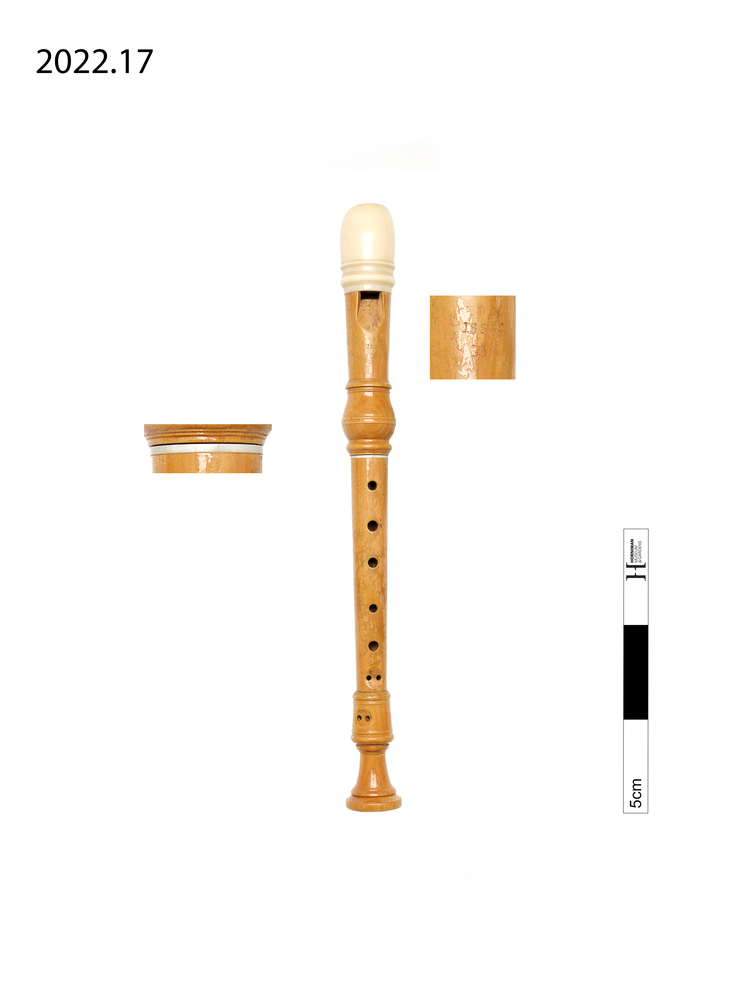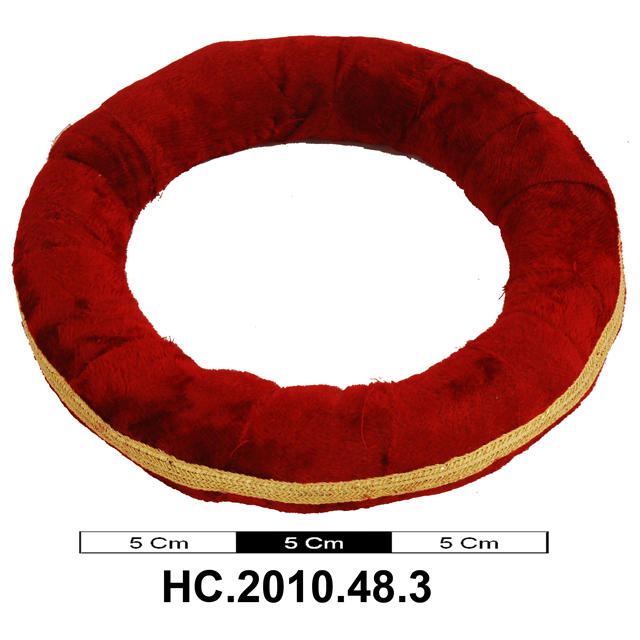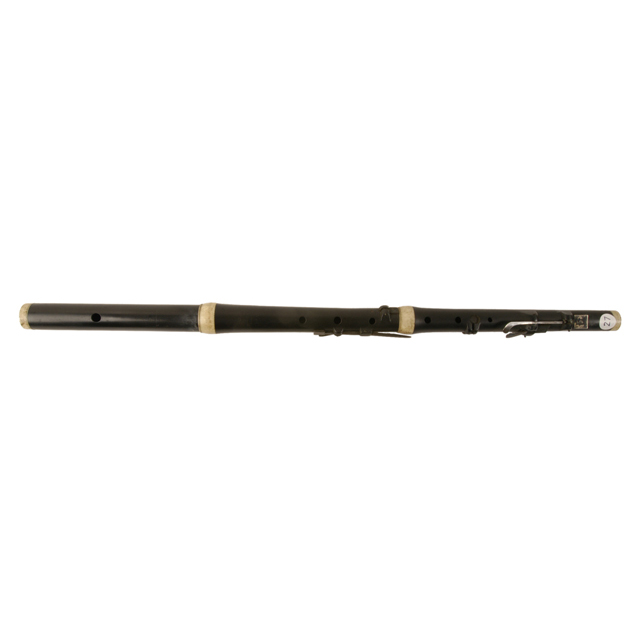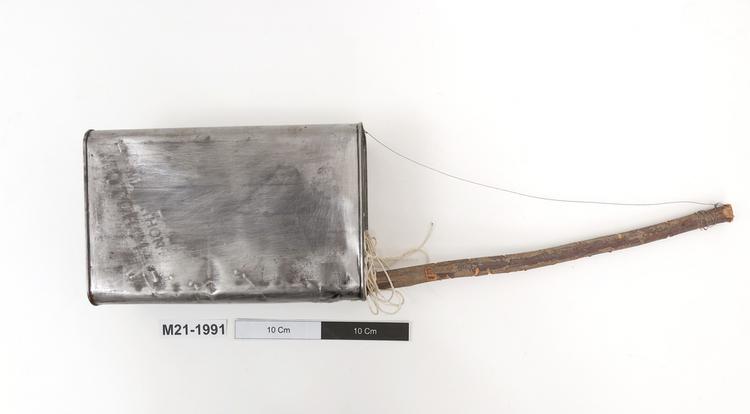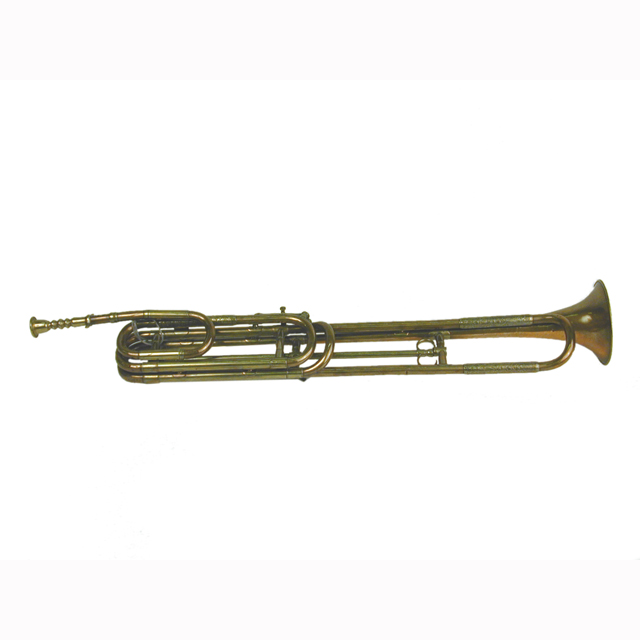
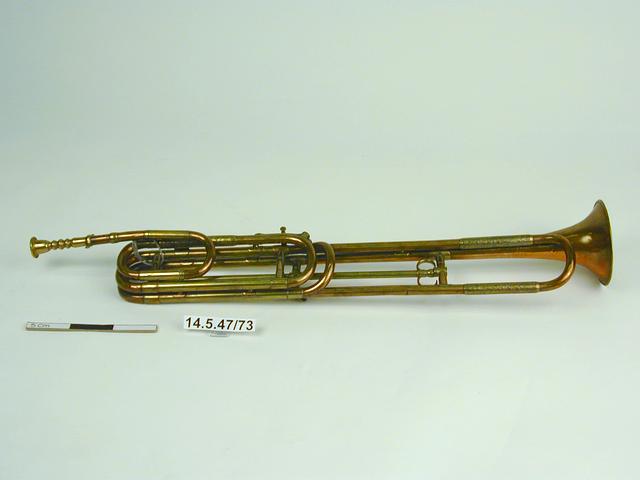
Slide trumpet sounding in D in present state, copper tubing, with brass slide, ferrules, stays and water-keys. Double slide, with finger-loops and thumb-plate. Three ferrules decorated with foliage. Casing for elastic slide return mechanism. One crook to sound D (A440); the shank attached to the associated mouthpiece not fitting into the mouth-pipe without the crook. Seemingly a reconstruction of about 1890 using parts from an older instrument. Mouthpiece, with silver rim, not necessarily contemporary. Instrument body incorporates a length of dummy tubing to compensate (in appearance) for the double slide. The crook is angled slightly inwards. Upper bends dented, bell tail slightly dented. Lacks slide-spring and end of spring column. Stamped: W. Wyatt 123 Portman Buildings Marylebone, (London) N.W. (numbered 2).
The single slide trumpet was popular in Britain in the mid 19th century as it allowed a greater number of pitches to be played than on the earlier natural trumpet. The double slide was invented by William Wyatt in 1890. His patent specification stated that 'An additional slide...is added and is secured to the ordinary slide and moves with it. This makes an extra length of tube available so that any note down to Eb (in the third space of the bass clef), can be obtained'. The addition of the second slide made the first bow of the standard trumpet (the curved section next to the bell) redundant, but false tubing was added for this section. Some writers have speculated that this tubing is purely ornamental, to make the instrument look more like other trumpet designs, but Wyatt's patent states that it is required to support the bell. The double slide trumpet never gained the popularity of its single slide predecessor because it was invented at a time when slides were giving way to valves in orchestral trumpet design, and by 1890 the valve trumpet in F was well on its way to becoming the standard in British orchestras.



